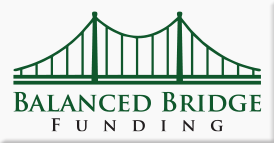Whitepapers on Legal Funding Industry. Legal funding has grown to become a billion-dollar business since the early 1990s when the industry was first started. Over the years, legal funding has evolved from a nascent sector with only a few companies daring to provide funding to where it is now. The industry is poised to grow in the United States and internationally with more countries accepting the practice in their legal community.
Legal funding can be quite complex for people not familiar with the industry. While the industry has achieved some popularity within legal circles, there are still many who may not understand what legal funding is exactly and how it can help them.
Legal funding can be divided into different sectors. Pre-Settlement funding is attained before a case reaches any settlement. A plaintiff or plaintiff attorney can access such legal funding so they can better fight a case to give themselves more of a chance to obtain a favorable settlement. Post-Settlement funding is when a settlement was agreed upon between the plaintiff or plaintiff attorney and the defendant but there is a delay in the distribution of payment. This financing can be used for those who can’t wait for that distribution. Case cost expense finance is specifically for plaintiff attorneys who need funding to take care of the costs specifically tied to their cases. Attorney lines of credit are for plaintiff attorneys against their portfolio of cases. They can then access the funds as needed while they are building and litigating those cases for their clients.
Since its inception, the legal funding industry has been the subject of several different whitepapers and studies in academia. Students, teachers, attorneys, and non-attorneys have all weighed in on the industry and contemplated how it can evolve. We took the time to find some of these papers and give some description of what they are about:
Third Party Litigation – A Signaling Model
In 2014, the DePaul Law Review published a white paper about litigation funding. At the time, the industry was referred to as third-party litigation funding. The authors of the paper explain in detail what funding actual litigation means for the consumer and the plaintiff’s attorney. They also state what factors are in the decision-making before funding is made available. Factors are assessed like liability, the defendant’s ability to pay, the contingent fee for the plaintiff’s attorney handling the case, the funder’s interest in the case, the background of the plaintiff’s attorney and plaintiff, and finally the venue of the lawsuit.
A Model Litigation Funding Contract
In 2014, the Iowa Law Review also published a white paper about litigation financing. The author of this paper compares litigation funding to venture capital funding as it pertains to lawsuits. At the time, the debate on legal funding was very popular in the legal community. While many legal practitioners knew what it was there were still questions on its existence, how it can be used by plaintiff attorneys, and how the courts will view such funding. The author tried to explain in their paper the elements that would go into a contract that can work for litigation financing companies and plaintiff attorneys. Elements discussed include attorney-client privilege, conflicts of interest, billing and payment schemes, legal portfolios, and the funder’s duty to invest.
Balanced Bridge provides post settlement funding options to attorneys and plaintiffs. We can help with advances when there is a settlement in a case, but there will be some delay until distribution of the settlement award and the contingency fees.
Attorneys can learn more about post settlement funding on their contingency fees here.
Plaintiffs can learn more about post settlement funding on their pending awards here.
Those looking for more information can call 267-457-4540.


